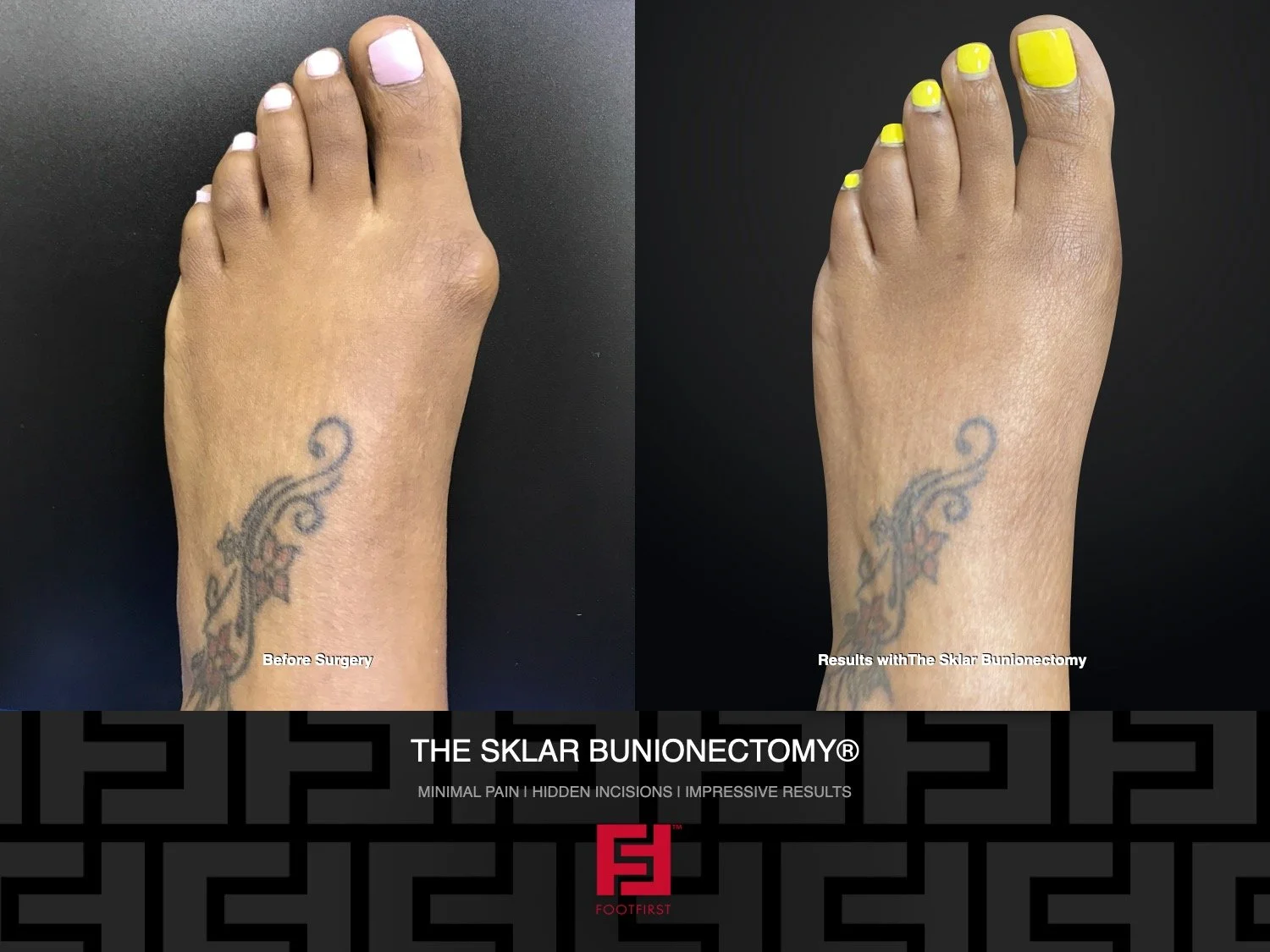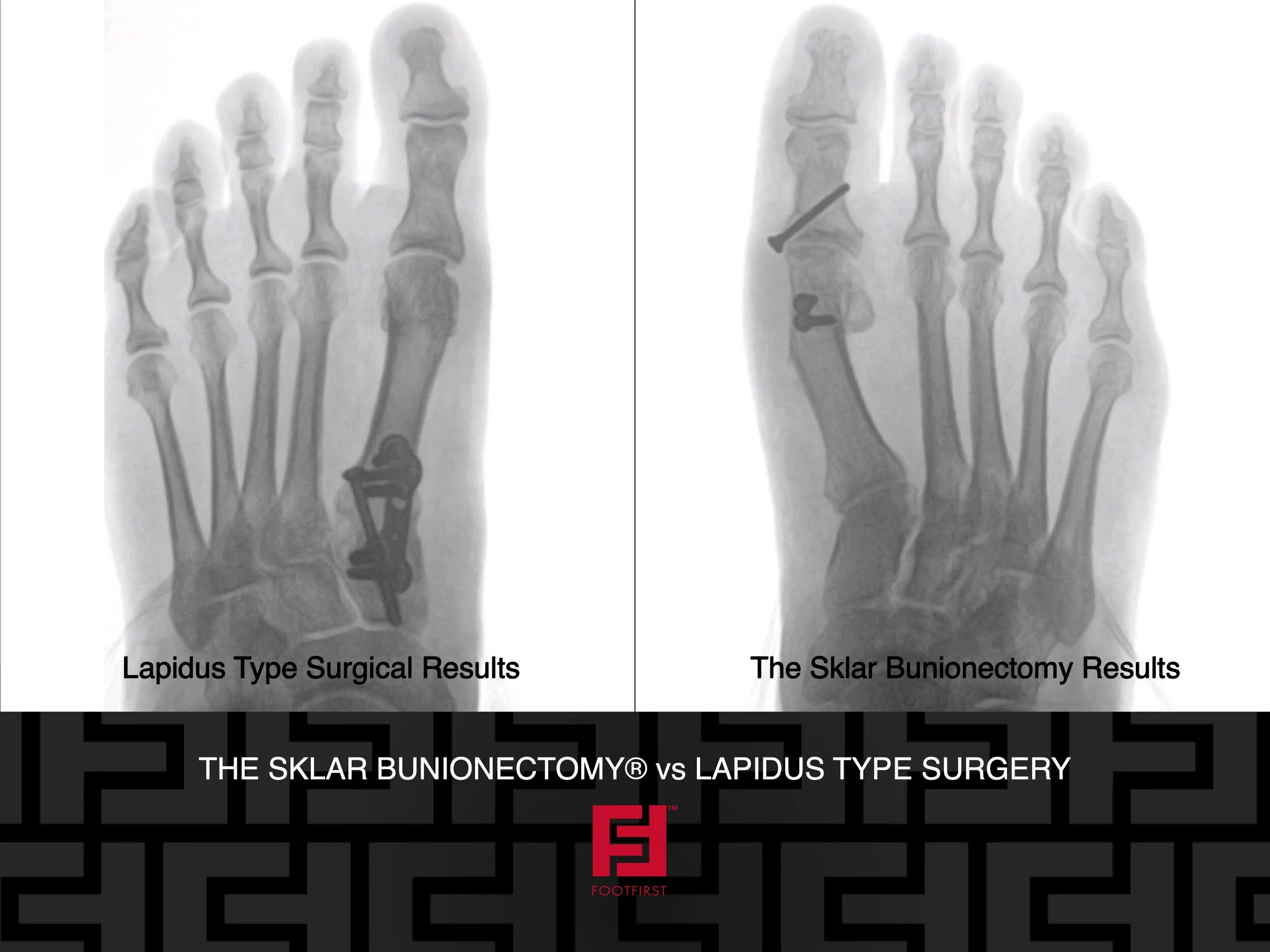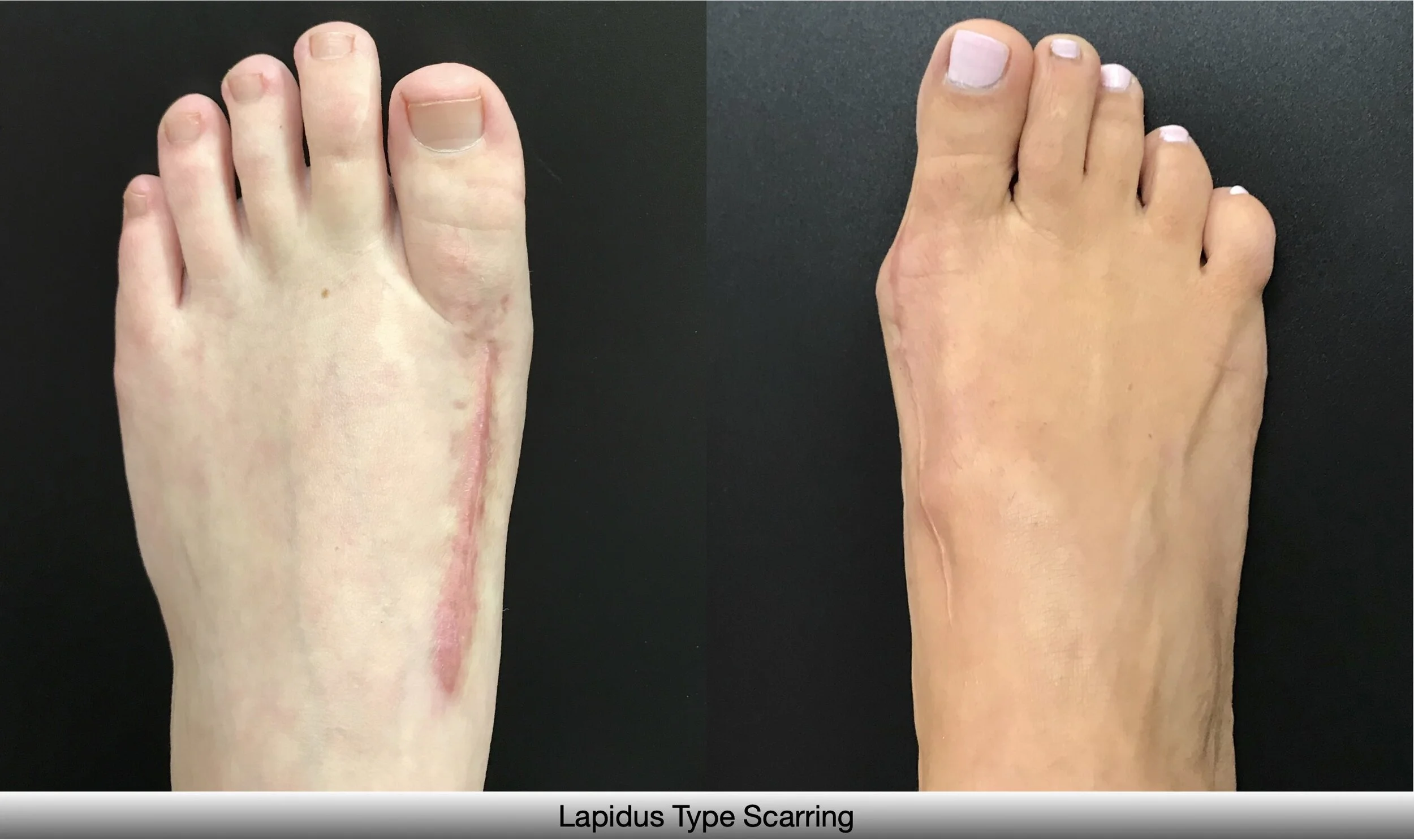So you just had the Sklar Bunionectomy®, what happens next?
Day 0: Immediate Post Sklar Bunionectomy®
Day 0
After our patients have bunion surgery in our state of the art surgical suite, our patients can expect to walk out of surgery pain free in a surgical shoe to their ride home. When at home a patient can expect to be independent, and are not required to have someone at home with them. Most patients should sit with their surgical foot elevated for most of the day, but they can get up to make a snack, go to the restroom, or do other small household activities.
Week 1: Post Sklar Bunionectomy®
Week 1
Our patients typically begin to experience some pain about 24 hours after having surgery. We send our patients home with a pain pill, which should make them feel comfortable during that time. While they are on the pain pill driving is not permitted, however they still can move about as needed. The pain usually subsides in about three days, and as soon as they come off their pain pill we allow them to drive to their desk jobs.
Week 2-3
In between two and three weeks we evaluate a patient’s incision to see if their sutures may be removed. Once we remove the sutures then they may get their foot wet in a shower, and start to wear a recommended gym shoe. Patients are still to avoid aerobic activity. Patients at this point usually start to turn a corner in regards to how their foot feels. Lots of our patients tell us that they are having minimal pain at this point, but their foot is still swollen and may have some nerve sensations like tingling or burning.
Week 6: Post Sklar Bunionectomy®
Weeks 6-9
Depending on the severity of a patient’s bunion and how they are healing we may allow an increase in activity during this time. Most patients are able to start with an elliptical or bicycle as soon as 6 weeks. At 8-9 weeks we typically allow patients to resume their normal activity, like jogging, exercise classes, walking long distances, and dress shoes.
Week 16: Post Sklar Bunionectomy®
Weeks 12-16
This is another time where our patients seem to tell us that they are turning another corner. The exercise activities they may have started a few weeks ago have become more normal feeling and comfortable. Swelling and numbness starts to subside, and strength begins to return to the toes and foot. Full healing takes six to eighteen months, so from this point on patients will continue to experience improvements to their feet. We post our best “after” photos usually 6 months to 1 year after surgery, so we don’t expect a full cosmetic result until that point.
Before and After: The Sklar Bunionectomy®
For additional information or to see how the Doctors at Foot First can drastically transform the look and feel of your feet, check out our before and afters at www.FootFirst.com or on Instagram @FootFirstPod.











